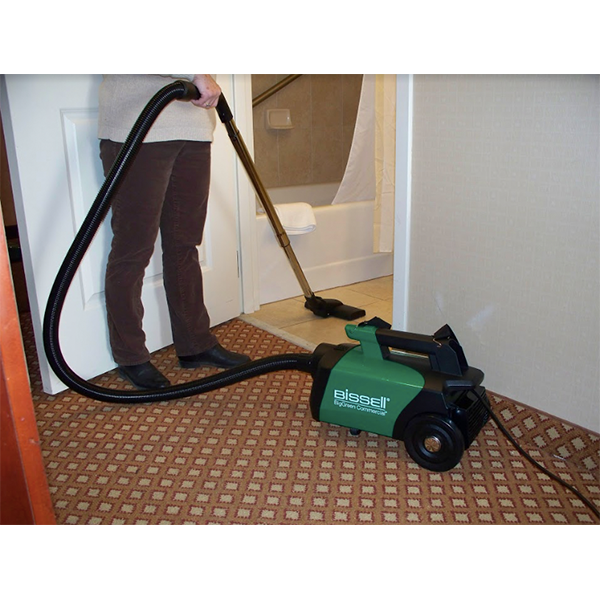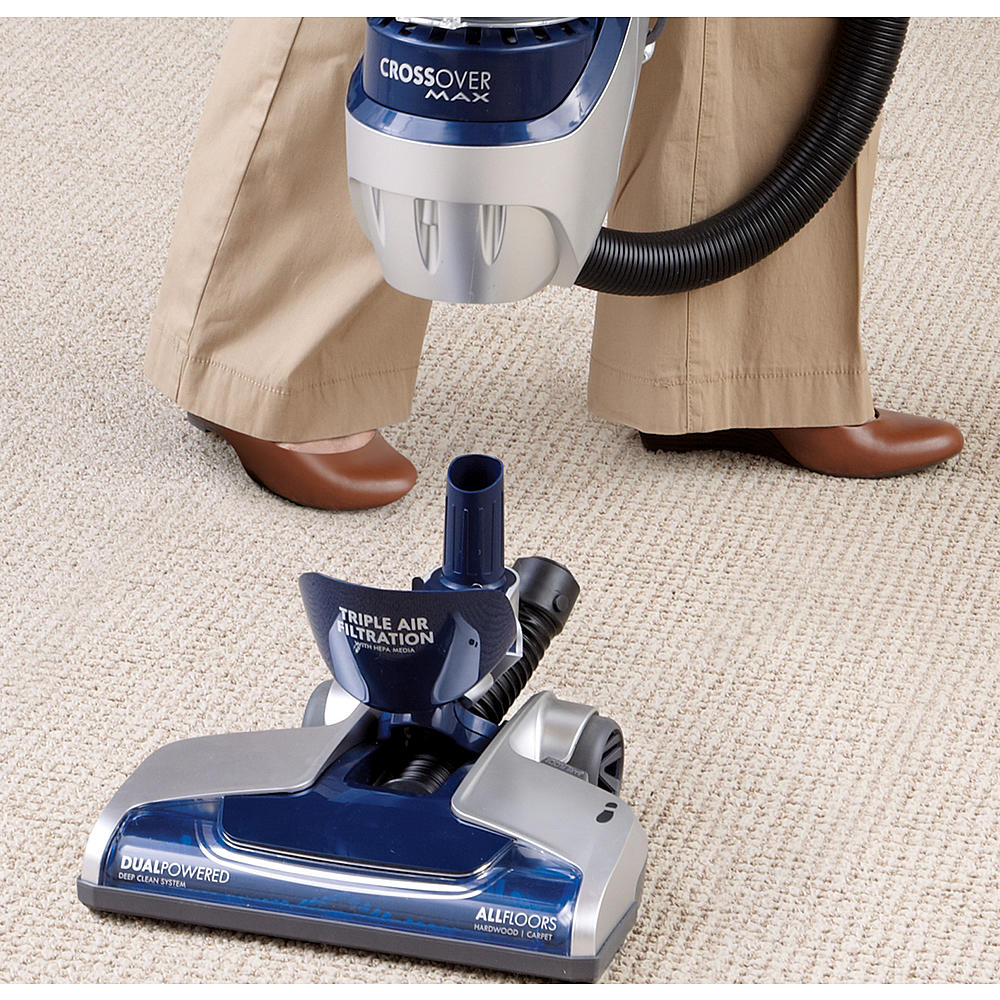Choosing the Right Tools for Vacuum Cleaner Maintenance
How to clean your vacuum cleaner? Choosing the right tools is key to effectively maintaining your vacuum cleaner. First, you’ll need a good set of screwdrivers. These will help you disassemble parts of your vacuum for a thorough cleaning. Second, keep a small brush or an old toothbrush handy. Use this to remove dust and debris from the vacuum’s brushes and nooks. Third, a pair of scissors or a seam ripper is useful. They cut away tangled hair and fibers from the vacuum’s roller brush. Fourth, a microfiber cloth is essential. It wipes down the vacuum’s exterior without leaving scratches. Lastly, don’t forget a can of compressed air. It blows dust out of tight spaces and crevices.

Be sure not to use any harsh chemicals or water on electrical parts. Always unplug your vacuum before you start cleaning it. With the right tools and some care, your vacuum cleaner maintenance will be safe and effective. These steps will also make the process of learning how to clean your vacuum cleaner easier and more efficient.
The Importance of Regular Maintenance Schedule
A regular maintenance schedule for your vacuum cleaner is crucial. It ensures that your vacuum operates at its best. Regular care extends the life of your machine. It also maintains optimal cleaning power; a well-maintained vacuum ensures cleaner floors. Schedule maintenance tasks daily, weekly, and monthly.
Make a checklist for routine cleanings. Include steps like emptying the dustbin after each use. Check the filters and clean them according to manufacturer instructions. Pay attention to roller brushes. Remove hair and debris that can hinder their rotation. Look for obstructions in the hose. Ensure they are clear for proper airflow.
Without regular maintenance, vacuums can lose suction. Over time, this affects their cleaning efficiency. Clogs can cause overheating and result in costly repairs. By sticking to a schedule, you prevent these issues.
New vacuum owners often ask how to clean your vacuum cleaner. Start with the manual. It guides on care frequencies and specific maintenance needs. Remember, a small effort regularly can save time and money in the long run. Preventative care beats dealing with a broken vacuum. Stay ahead with a regular maintenance schedule, and enjoy a cleaner home with a reliable vacuum.

Step-by-Step Guide to Cleaning Your Vacuum Cleaner
Cleaning your vacuum cleaner need not be a daunting task. Here’s a simple guide to help you through the process. This will ensure your vacuum functions well and lasts longer. Keep in mind to unplug the vacuum before starting this step-by-step routine.
- Empty the Dust Bin: Do this after each use to prevent overfilling and loss of suction.
- Clean the Filters: Remove and tap out the dust over a trash can. Rinse if washable, and replace only when dry.
- Check the Brush Roll: Cut off and remove any tangled hair or fibers. This helps the roll spin freely.
- Wipe Exterior: Use a microfiber cloth to clean the outside. This prevents dust buildup on the surface.
- Clear the Hose: Straighten the hose and look through it for blockages. Remove any found objects gently.
- Inspect Belts: Belts can wear out. Check for slackness or breakage, and replace if needed.
- Treat the Wheels: Wipe wheels with a damp cloth to remove debris that can scratch floors.
- Use Compressed Air: Blast away dust from crevices and tight spaces inside the vacuum.
- Reassemble: Once everything is clean and dry, put your vacuum back together.
This cleaning routine touches on how to clean your vacuum cleaner thoroughly. Regular adherence to these practices can enhance your vacuum’s performance. It ensures you’re getting the most out of your machine with every use.
Addressing Common Vacuum Cleaner Issues
Even with regular upkeep, you may encounter common issues with your vacuum cleaner. Identifying and solving these problems keeps your machine in top shape.
Loss of Suction
This is often due to a full bag or dustbin. Empty or replace it to resolve the issue. Clogged filters can also reduce suction. Clean or replace them as needed.
Strange Noises
A rattle or whirring sound may signal a blockage. Check the hose and remove any objects. Worn belts can also cause noise. Inspect and replace them if necessary.
Persistent Odors
Bad smells often come from a dirty filter or dustbin. Empty the bin and clean or replace filters to freshen up.
Poor Movement
Difficulty pushing the vacuum can mean issues with the wheels or brush roll. Clean both parts and check for damage. Replace if the wheels are stuck or the brush is worn.
Overheating
Your vacuum could overheat if airflow is blocked. Make sure filters, bags, and passageways are clear.
Facing these issues head-on with swift action can prevent larger problems. Use this guide to address any concerns with your vacuum cleaner quickly.
Enhancing Performance: Replacing Filters and Bags
To boost your vacuum’s effectiveness, consider the filters and bags. They play a key role in maintaining a high level of cleaning performance. Here’s what you need to know:
- Check Filters Regularly: Over time, filters trap a lot of dust and debris. Inspect them often. Follow the manufacturer’s advice on when to clean or replace them. A clean filter ensures better air flow and stronger suction.
- Know Your Filter Type: Some vacuums have washable filters; others need replacements. Know what type your machine uses. This helps in planning your maintenance schedule.
- Bagged Vacuums Need Attention: Bags in some vacuums collect dirt and need frequent checks. A full bag reduces suction power. Change it before it gets too full. Remember, a half-full bag can already hinder performance.
- Bagless Vacuums: Empty the dustbin after each use as suggested earlier. It keeps your vacuum working well and prevents loss of suction.
By staying on top of filter and bag maintenance, you ensure your vacuum cleans at its best. This also extends its life. Include these steps in your regular cleaning routine. Your vacuum will reward you with stronger performance and cleaner floors.
Expert Tips for Longevity and Efficiency
To keep your vacuum cleaner running like new, here are expert-approved tips. These will increase your vacuum’s lifespan and improve its efficiency.
- Use It Properly: Always follow the manufacturer’s usage instructions. Rough handling can shorten your vacuum cleaner’s life.
- Regularly Replace Parts: Worn components, like belts and brushes, affect performance. Change them as needed.
- Don’t Overfill: Whether it’s a bagged or bagless model, never let the container get too full. It strains the motor.
- Handle With Care: Be gentle when moving your vacuum around. Protect it from drops and harsh impacts.
- Suit to the Surface: Adjust settings according to the floor type. This ensures effective cleaning without unnecessary wear.
- Check the Cord: Avoid kinks and entanglement. This can damage the cord and affect power supply.
- Store Properly: Keep your vacuum in a dry, cool place. Proper storage prevents damage from moisture and heat.
- Professional Servicing: Once in a while, have it checked by a professional. They might spot issues you missed.
By applying these pointers on how to clean your vacuum cleaner, you safeguard its condition. Regular upkeep paired with correct usage guarantees a device that’s always ready to perform.
Troubleshooting Tips for Your Vacuum Cleaner
When your vacuum cleaner isn’t working as it should, don’t panic. Troubleshooting common issues can often be a quick fix. Here’s what to look for and how to solve these problems:
- Check for Blockages: Unplug the machine. Look for blockage in the tube or the cleaning path.
- Reset the Vacuum: Some models have a reset button. Press this if it’s overheated or stopped working.
- Test the Outlet: Make sure the power source is working. Try plugging into a different outlet.
- Listen for Unusual Noises: Sounds can hint at internal issues. Open the vacuum and check for loose or broken parts.
- Inspect the Roller Brush: Make sure it spins freely. Remove any hair or debris that might be stuck.
- Evaluate the Filters: When filters get clogged, cleaning performance drops. Clean or replace them as necessary.
- Examine the Cord: Cords can become frayed or damaged. If this is the case, it may be time for a replacement.
By following these easy steps on how to clean your vacuum cleaner, most issues can be resolved quickly. Regular troubleshooting as part of your maintenance routine will keep your vacuum running smoothly. This approach to care will avoid many common problems before they arise.
Professional Maintenance vs. DIY: When to Seek Help
Deciding between DIY maintenance and professional help is essential for your vacuum’s health. If you follow the guide on how to clean your vacuum cleaner, DIY should cover most needs. However, there are times when an expert’s help is valuable.
For simple cleaning and replacing of filters and bags, do it yourself. Empty the dustbin, wipe down the exterior, and clear out the hose regularly. Check and maintain brushes and belts too. These are all tasks you can handle at home with ease.
Seek professional maintenance when facing complex problems. If your vacuum has lost suction and cleaning filters didn’t help, get expert advice. Strange noises after checking for blockages could mean an internal issue. This requires a professional’s diagnosis.
Persistent odors or overheating, even after a cleanout, need attention. Take your vacuum to a service center if this happens. The same goes for poor movement or when you spot signs of wear that aren’t simple fixes.
Lastly, some vacuums come with a warranty that requires professional servicing. This ensures the warranty remains valid. Check your vacuum cleaner’s manual. It guides on when and how to seek professional help.
Balancing DIY and professional maintenance means your vacuum works well for longer. It also saves you time and money on unnecessary repairs. Always assess the issue carefully and choose the best option for your vacuum’s performance and lifespan.


